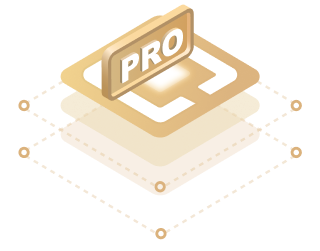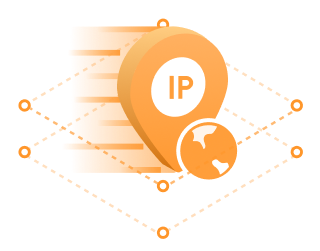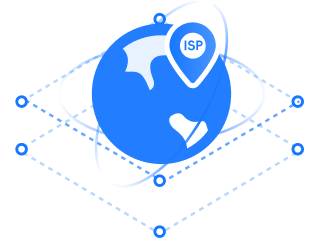1. What is a Proxy Server?
Simply put, a Proxy Server acts like an intermediary or relay between a client (e.g., your computer or smartphone) and a target server (e.g., the website you wish to visit).
· How it Works: When a client configured to use a proxy server requests a web resource, the request is first sent to the proxy. The proxy then makes the request to the target server on behalf of the client, retrieves the data, and forwards that data back to the client.
· Core Functions:
o Anonymity: The target server sees the proxy's IP address instead of the client's real IP, providing a level of anonymity.
o Content Access Control & Filtering: Administrators can configure proxy rules to allow or block access to specific websites or content (e.g., restricting social media access in a workplace).
o Performance Optimization & Caching: Proxy servers can cache (temporarily store) frequently accessed web content. When multiple users request the same content, the proxy serves it directly from its cache, significantly speeding up access and reducing bandwidth consumption.
o Access Authentication: Can be configured to require user authentication via the proxy before accessing the external network.
o Logging: Record user network activity (privacy implications must be considered).
o Circumventing Geo-Restrictions: Access content blocked in your geographic region by routing through a proxy located in an allowed location (note legal compliance).
2. What are the Main Types of Proxy Servers?
Proxy servers are primarily categorized based on their deployment location, primary function, and anonymity level:
1. Forward Proxy Server:
· Location & Role: Deployed between the client and the internet. Clients must be explicitly configured (manually or via scripts like PAC) to use the proxy's address and port. It acts as an intermediary for clients accessing external internet resources.
· Common Sub-types (by Anonymity Level):
o Transparent Proxy: Informs the target server that this is a proxy request (detectable via headers like Via or X-Forwarded-For) and transmits the client's real IP address. Primarily used for caching and access control, offering no anonymity. Common in corporate networks.
o Anonymous Proxy: Informs the target server this is a proxy request but hides or modifies the client's real IP address (sends a fake IP or omits it). The target website knows a proxy is being used but not the actual source.
o Elite/High-Anonymity Proxy (High-Anonymity Proxy): Not only conceals the client's real IP address, but also masquerades as a regular client by not sending any detectable proxy-related headers (like Via). To the target server, the traffic appears to come directly from a normal user.
· Primary Uses:
o Anonymous client access to the internet (Anonymous/High-Anon proxies).
o Internal network (corporate/school) access control and content filtering (Transparent proxies).
o Caching popular content to accelerate access for internal users (Transparent proxies).
o Bypassing local network restrictions (e.g., IP bans).
o Centralized traffic logging.
2. Reverse Proxy Server:
· Location & Role: Deployed in front of server-side resources (e.g., a web server farm). When a client accesses a website or service, they actually connect first to the reverse proxy. The reverse proxy then forwards the request to an appropriate backend server (or server cluster) and relays the response back to the client. The client is typically unaware of the proxy and backend interaction.
· Primary Uses:
o Load Balancing: Distributes incoming client requests across multiple backend servers to prevent overload, improving overall system performance, scalability, and availability (core function).
o Web Acceleration & Caching: Caches static content (images, CSS, JS files), serving it directly to clients to reduce backend server load and improve user experience speed.
o Security: Acts as a protective shield for backend servers, defending against DDoS attacks, implementing firewall rules (WAF - Web Application Firewall), and filtering malicious requests.
o SSL/TLS Termination: Handles the computationally intensive SSL/TLS encryption and decryption on the proxy itself, freeing up backend server resources.
o Single Entry Point: Provides a unified access address (domain/IP) for multiple backend services.
o Canary Testing / A/B Testing: Routes a portion of user traffic to a new service version for testing.
3. Transparent Proxy Server (Gateway-Level):
· Location & Role: Typically deployed at the network gateway level (e.g., on a router or firewall). Client devices require no configuration. User traffic is intercepted and redirected transparently by the gateway to the proxy server for processing. Clients are usually unaware of its existence ("transparent").
· Primary Uses: Primarily implemented by organizations or ISPs (Internet Service Providers).
o Forced Content Filtering & Monitoring: ISP-level compliance filtering, corporate-wide activity monitoring.
o Forced Caching: Used by ISPs to save upstream bandwidth and potentially increase user access speeds (though users might not perceive this).
o Simplified Deployment: Managed centrally at the gateway; no user setup required.
4. Other Types (Supplementary):
· Open Proxy: Publicly accessible proxies often lacking access controls. Highly insecure, unstable, slow, and risky (many are malicious "honeypots"). Strongly discouraged from use.
· CGI/Web Proxy: Typically a webpage where users enter a target URL to visit through the proxy. Offers poor anonymity and efficiency; largely obsolete.
3. How to Use a Proxy Server? (Setup Guide)
The method for using a proxy depends on the proxy type and the device/software you are using:
1. Browser Settings (Most Common):
· Navigate to browser Settings (usually under "Settings" > "Network" or "Advanced" > "System" or "Proxy Settings").
· Select "Manual proxy configuration" or similar.
· Enter the proxy server's IP Address (or hostname) and Port Number (commonly for HTTP/HTTPS).
· If authentication is required, enable it and enter the username and password.
· Save settings. Browser traffic will now route through the proxy.
· Advantage: Flexible configuration specific to the browser.
· Disadvantage: Traffic from other applications (e.g., download managers, IM) won't use it (unless individually configured).
2. Operating System (OS) Level Settings:
· Configure within the Network Settings of Windows, macOS, or Linux.
· Setup is similar to browser settings: provide proxy address, port, and authentication if needed.
· Advantage: Routes traffic from most (or all, depending on app design) applications system-wide.
· Disadvantage: Slightly more complex; if the proxy fails, it can disrupt all network traffic.
3. Automatic Configuration Script (PAC):
· Organizations or services sometimes provide a PAC (Proxy Auto-Configuration) file URL (usually .pac or .js).
· Choose "Use setup script" or "Automatic proxy configuration URL" in browser or OS settings and enter the PAC file URL.
· The client executes the script rules (e.g., send specific URLs via the proxy, bypass others) to determine routing dynamically.
· Advantage: Highly flexible for complex routing rules.
· Disadvantage: Relies on script correctness and availability.
4. VPN Applications (Often Include Proxy Features):
· Many commercial VPN services integrate proxy features (especially SOCKS5 proxies) within their apps.
· Configure directly within the VPN app's settings.
· Advantage: Typically includes an encrypted tunnel for enhanced security; easy setup.
· Disadvantage: Usually a paid service.
5. Application-Specific Settings:
· Many network applications (download tools, chat clients, email software) have their own dedicated proxy settings.
· Look for options like "Network Settings" or "Connection Settings" within the specific app.
· Advantage: Granular control over proxy usage for individual programs.
· Disadvantage: Requires separate configuration for each application.
4. What Should You Consider When Using a Proxy Server? (Critical Considerations)
While proxy servers are highly useful, it's crucial to be aware of these key points to ensure security and performance:
1. Security & Privacy Risks:
· Trust: All your traffic (unencrypted portions) flows through the proxy server operator. They can potentially see and log your non-HTTPS activity (like HTTP browsing)! Choosing a reliable, reputable provider is paramount, especially for paid services/reverse proxies/VPN-associated proxies.
· Malicious Proxies: Strictly avoid unknown free/open proxies. They are frequently used by hackers for data theft (credentials, browsing history), injecting malware, or performing man-in-the-middle (MitM) attacks.
· HTTPS is Essential: Proxy servers cannot decrypt the content of HTTPS traffic (though the domain might be visible during connection setup via SNI). As long as you access legitimate HTTPS-enabled sites your actual page content and form submissions remain encrypted, ensuring transmission security. Always verify the connection uses HTTPS.
· Logging Policies: Understand your provider's logging policy (what they log, retention period). Choose a provider with a strict no-logs or robust privacy policy if anonymity is a priority.
2. Performance Impact:
· Speed Reduction: Adding an intermediary always increases network latency. Proxies located far away or under heavy load can cause significant slowdowns. Choose proxies in suitable geographic locations with sufficient bandwidth.
· Reliability: The proxy server itself can experience downtime or network issues, causing your connection to break. Opt for services offering high availability guarantees.
3. Legality & Compliance:
· Terms of Service (ToS): Check the ToS of target websites/services (e.g., streaming platforms, social media). Using a proxy to access them might violate their policies and lead to account suspension or bans.
· Local Laws: Using a proxy to bypass government-imposed censorship or access restricted content may violate laws in certain countries/regions. Always comply with local regulations.
· Copyright & Content: Never use proxy servers for illegal activities such as copyright infringement.
4. Configuration Complexity:
· Correct Setup: Incorrect proxy settings (wrong IP/port, failed authentication) will result in loss of internet connectivity.
· Conflicting Settings: Be mindful of potential conflicts between OS-level, browser-level, and application-specific proxy configurations.
5. Compatibility Issues:
· Protocol Support: Ensure your chosen proxy supports the necessary protocols (HTTP/HTTPS/SOCKS4/SOCKS5).
· Application Limitations: Some older or rarely updated applications may lack proper proxy support.
Conclusion
Proxy servers are indispensable components of the internet infrastructure. Their diverse types – forward, reverse, transparent, etc. – serve distinct core needs, ranging from privacy protection and access control to performance optimization and security hardening. Understanding how these proxies work and their applicable scenarios, combined with the ability to configure and use them correctly and securely, is vital for both individual users seeking privacy and efficient access, and for enterprises ensuring network security, managing resources, and scaling services.












































